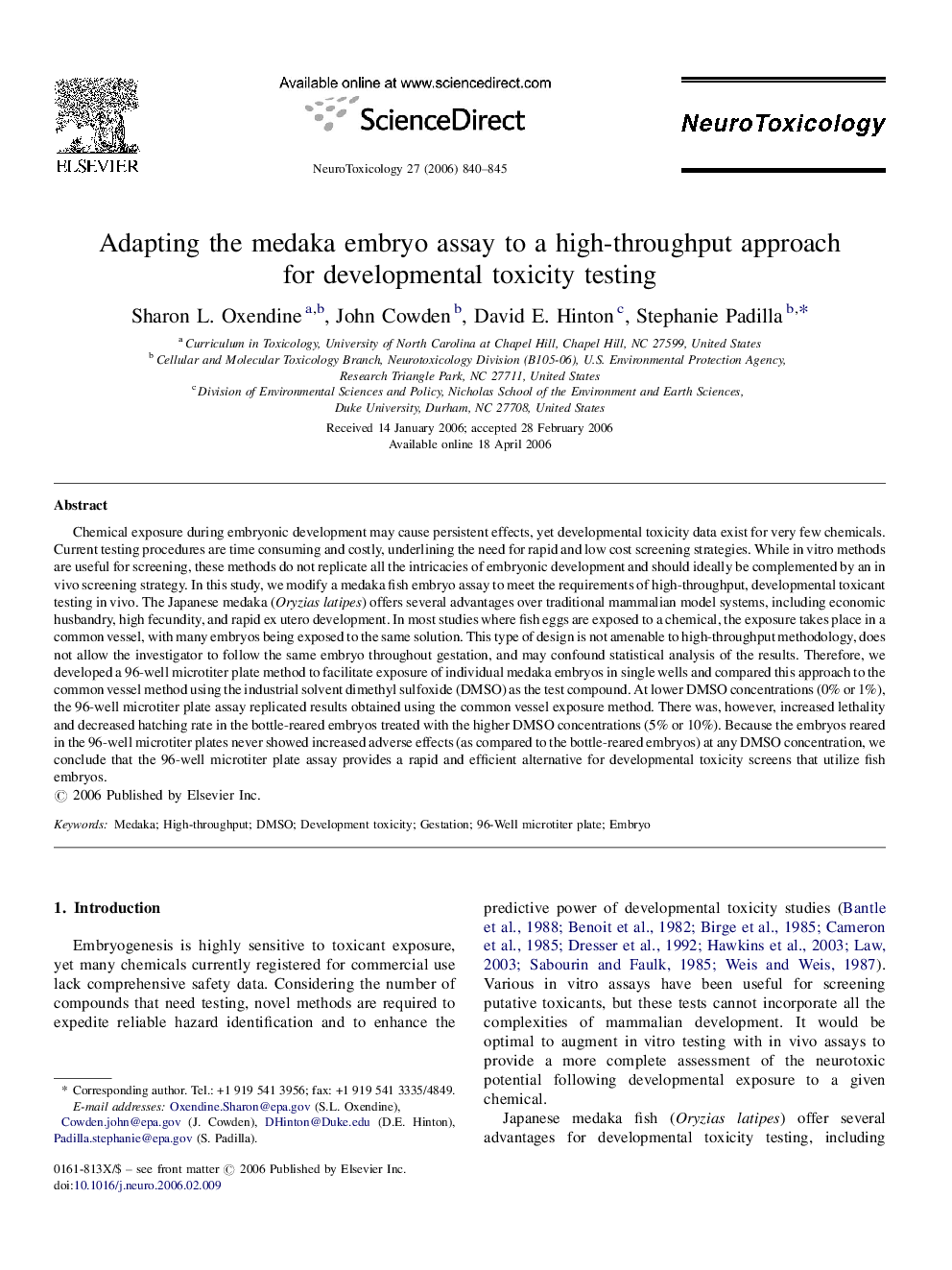| کد مقاله | کد نشریه | سال انتشار | مقاله انگلیسی | نسخه تمام متن |
|---|---|---|---|---|
| 2590601 | 1131753 | 2006 | 6 صفحه PDF | دانلود رایگان |

Chemical exposure during embryonic development may cause persistent effects, yet developmental toxicity data exist for very few chemicals. Current testing procedures are time consuming and costly, underlining the need for rapid and low cost screening strategies. While in vitro methods are useful for screening, these methods do not replicate all the intricacies of embryonic development and should ideally be complemented by an in vivo screening strategy. In this study, we modify a medaka fish embryo assay to meet the requirements of high-throughput, developmental toxicant testing in vivo. The Japanese medaka (Oryzias latipes) offers several advantages over traditional mammalian model systems, including economic husbandry, high fecundity, and rapid ex utero development. In most studies where fish eggs are exposed to a chemical, the exposure takes place in a common vessel, with many embryos being exposed to the same solution. This type of design is not amenable to high-throughput methodology, does not allow the investigator to follow the same embryo throughout gestation, and may confound statistical analysis of the results. Therefore, we developed a 96-well microtiter plate method to facilitate exposure of individual medaka embryos in single wells and compared this approach to the common vessel method using the industrial solvent dimethyl sulfoxide (DMSO) as the test compound. At lower DMSO concentrations (0% or 1%), the 96-well microtiter plate assay replicated results obtained using the common vessel exposure method. There was, however, increased lethality and decreased hatching rate in the bottle-reared embryos treated with the higher DMSO concentrations (5% or 10%). Because the embryos reared in the 96-well microtiter plates never showed increased adverse effects (as compared to the bottle-reared embryos) at any DMSO concentration, we conclude that the 96-well microtiter plate assay provides a rapid and efficient alternative for developmental toxicity screens that utilize fish embryos.
Journal: NeuroToxicology - Volume 27, Issue 5, September 2006, Pages 840–845